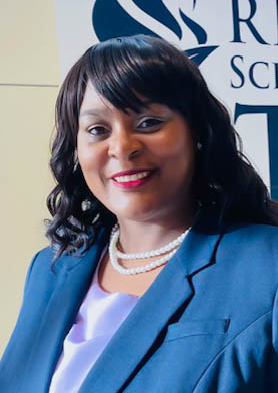
Tia S. Jones
Catawba Trail Elementary School
Elgin, South Carolina
tiajones@richland2.org
Best Practices
1) “When implemented well, formative assessments can effectively double the speed of student learning.” -Dylan William
In order to teach students as individuals, a teacher must first know the student and their learning style. Formative assessments conducted throughout the school year will allow teachers to be more knowledgeable about individual students’ strengths and challenges. Teachers will be able to understand students’ prior knowledge.
Formative assessment takes place during the process of teaching and learning. These classroom assessments are the road maps that should drive their instruction by effectively helping teachers identify which students are learning, which students are struggling and which students are at-risk. The collection of this data should be informal and intentional.
These assessments are not typically graded or average into report card grades. They are golden nuggets of feedback that help to determine the amount of progress a student is making toward their end goal. Instead of grades, students are given effective and timely feedback. Teachers should assess frequently and routinely where students are in relation to their learning goals.
As an assistant principal, I observe formative assessments throughout the school. I often see teachers listen to class discussion, teachers working one-on-one and with small groups of students. I also observe teachers peering overs students’ shoulders, distributing exit slips and even using technology such as Kahoot and Quizlet.
The first few years as an administrator I helped to establish and lead our school’s Literacy Leadership team. We have focused primarily on text-based analysis, formative assessments, and feedback. The leadership team provided continuous professional development. Our teachers conducted peer observations. I strategically created an observation schedule for all teachers. Once per semester, they observed classrooms in different grade levels. As they observed their colleagues, they looked for ways the teacher incorporated formative assessments and feedback to students. They then collaborated to give formative feedback to each other. This was one of the most critical parts of the peer observations. As I gained more experience as an administrator I strengthened my instructional leadership practices by ensuring our teachers were data informed and equipped to learn and lead through the use of various data sets.
Educators should consistently monitor students’ progress and adjust teaching and/or curriculum accordingly. The data gathered from formative assessments through continual progress monitoring has been valuable to student achievement and because of it; the achievement gap is becoming gradually smaller in our school. In recent years, we received the Palmetto Silver Award for Closing the Achievement Gap.
2) “The most valuable resource that all teachers have is each other. Without collaboration, our growth is limited to our own perspectives.” -Robert John Meehan
Teachers and leaders should continue fostering constructive relationships with colleagues. By increasing collaboration and conversations around designing engaging work we should see a new level of growth with our students academically and socially.
As an assistant principal, I am in a role of support, facilitation and creating leadership designers. School leaders are redesigning work for the teachers to allow more time for collaboration, conversation, and engagement. As an elementary school administrator, coming from the classroom, I can relate to our teachers and their needs. Our school has a collaborative school culture, but I wanted to find a way to better enhance our teacher collaboration. During my first year as assistant principal, I knew that finding time to collaborate with fellow colleagues would be a task. I knew the importance of having the necessary resources and the time to plan. As a result, a half day was built into the school schedule for additional collaboration with colleagues, every nine weeks. I requested subs for two grade levels at a time over three days and I scheduled that collaboration time opposite of their planning, so that the teachers could have that time, as well. My quest to remove the barrier of time continued during our In-Service Professional Development days. I contacted local businesses to sponsor lunch for our entire faculty and staff, so as to have a working lunch. This allowed our teachers more time to collaborate. The administration planned activities for collaboration on and off campus. Professional Development has been redesigned so teachers are engaged and find their work more satisfying. One example of a redesign is when we took our teachers on a “field study.” We loaded the school bus and the entire faculty and staff made it to our destination: Seawell’s restaurant. Saluda Shoals staff facilitated a variety of team building activities. Next, the teachers walked across to the State Fair to complete a specially designed group scavenger hunt. The purpose of this off-campus professional development was to allow for collaboration, use of technology, and to model how to use field study guides to engage students. The content, atmosphere, and delivery were tailored to engage the teachers, show them our support so that our students would benefit. In most recent years, at the start of the school year, to spark teacher and community engagement I designed a day for teachers to participate in a Premier Teacher Lunch Bunch Tour. The event was a tour of six restaurants in the Village of Sandhills that donated a variety of food. This gave our teachers an opportunity to connect with our community in a fun engaging way while also completing several challenges that incorporated our school-wide character education curriculum called the 7 Mindsets.
Collaboration with Colleagues is instrumental in the growth of teachers and students. Research tells us it could also assist with teacher retention. As educational leaders we must continue to be innovative and think critically and creatively to support our 21st century learners. Removing the barrier of time is essential in the collaboration process.


